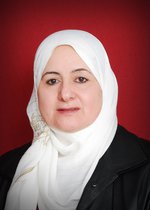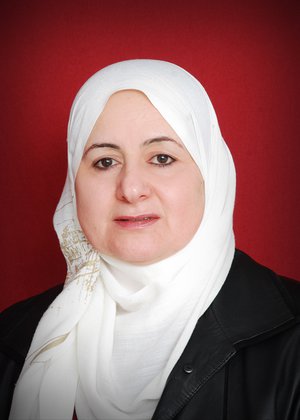Samar Al Shakhshir
- Nature of Work
- Academic
- Profession
- Assistant Professor
- Email Address
- [email protected]
- Office Phone
- (+970) 9 2345113 Ext. 2270


Samar Al Shakhshir
- Nature of Work
- Academic
- Profession
- Assistant Professor
- Email Address
- [email protected]
- Office Phone
- (+970) 9 2345113 Ext. 2270
- Course Title
- Inorganic chemistry II
- Course Number
- 10231322
- Instructor Name
- Samar Al Shakhshir
- Contact Information
- [email protected]
- Semester(s) and academic year(s)
-
Second Semester 2024
First Semester 2023 - Compulsory / Elective
- Compulsory
A lecture course focusing on coordination chemistry and complexes. Contemporary theories of bonding and structure are treated rigorously. Preparations, chemical and redox reactions (including mechanisms), magnetism, spectroscopy and applications of coordination compounds are treated. A general survey of transition metals and their descriptive chemistry are also included.
The course aims at providing junior student with a solid background in coordination chemistry, with emphasis on transition metal elements and their coordination compounds. Both theory and descriptive chemistry is involved, at a balanced approach, without mathematical rigor.
At the end of this course students should be able to;
- Able to read and comprehend literature about chemical and physical properties of main group elements and transition metal elements
- Explain chemical properties of coordination compounds together using mechanistic and theoretical details
- Explain stability and isomerism of coordination compounds
- Applying new bonding theories (CFT, VBT and MOT) in studying coordination compounds
- Use such theories in explaining (and predicting) structural, magnetic and spectral properties of coordination compounds.
- Use VBT, CFT, MOT and AOM in predicting structural and conformational preferences among coordination compounds.
- Textbook(s) and References
Textbook(s)
Gary L. Miessler and Donald A. Tarr, Inorganic Chemistry, 5th ed., Pearson Prentice Hall, USA and other countries, 2013.
References
1) Purcell and Kutz, Introduction to Inorganic Chemistry, WB Saunders, Philadelphia.
2) Cotton and Wilkinson, Basic Inorganic Chemistry, 3 rd ed., J. Wiley, NY, (1995).
3) Inorganic Chemistry, second edition, D. F. Shriver, P. W. Atkins, and C. H. Langford;
W. H. Freeman and Co., New York, 1994. 913 pp.
4) W. L. Jolly; Modern Inorganic Chemistry, second edition, McGraw-Hill Book Co.,
New York, 1991. 655 pp.
5) Complexes and First Row Transition Elements, David Nicholls, Macmillan.
6) Advanced Inorganic Chemistry, fifth edition, F. A. Cotton and G. Wilkinson; Wiley.
Interscience, New York.
7) Shriver and Atkins' Inorganic Chemistry, 5 th ed., Freeman, NY, 2010.
| Activity | Percent (%) |
|---|---|
| Electronic Exams &project | 20% |
| Midterm Exam | 30% |
| Final Exam | 50% |